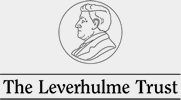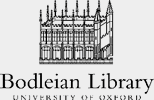Prolusions, or, Select Pieces of Antient Poetry (1760)
Prolusions, or, Select Pieces of Antient Poetry (1760), edited by Edward Capell, has garnered scholarly interest largely for its conjectural attribution of Edward III to Shakespeare. Whilst that play indeed forms the centrepiece of the miscellany, Capell’s interest in it is subservient to a larger antiquarian endeavour and bibliographic design.
The scholarly prolegomena provided by Capell testifies to an emerging institution of vernacular literary scholarship that aspired to exacting editorial methodologies. Its Preface informs readers that each text acts as a “specimen of what he conceiv’d ought to be found in that work which would truly merit the name of an edition” (‘Preface’). Likewise, the dedication to Baron Willoughby of Parham (1713-1765), trustee of the British Museum, Vice-president of the Royal Society, and President of the Society of Antiquaries, attests to Capell’s involvement in antiquarian circles, and his aspiration “to do Service to good letters by setting an Example of Care and Fidelity to Persons who take upon them the Publication of our best Authors”.
Capell’s editorial rationale is at times remarkably prescient in light of later bibliographic procedures. The quasi-facsimile transcriptions, following each poem, of the title-pages of all collated texts are indicative of this. Moreover, a system of collation that presents “every departure” from the copy text “in the most simple manner”, allows readers to examine editorial “alterations, and bestow a little reflection upon the reasons that occasion’d them” (‘Preface’). Nevertheless, strikingly odd editorial procedures abound. The Preface details that amongst “certain new marks peculiar to this work” can be found “a particular note of punctuation to distinguish irony”; a system of dashes in dramatic speeches that “denotes [...] a change of address”; crosses next to words in the text of Edward III that are “significant of thing shown or pointed to”, or “of a thing delivered”; and double inverted commas to denote spoken asides. The reasoning for such innovation is largely aesthetic, Capell intending them to act as “no improper substitutes” for “marginal directions” that are normally a “blemish to the page” (‘Preface’). Indeed, the aesthetic quality of the miscellany was clearly important to both its editor and publishers, Richard and Jacob Tonson (III), for it was produced by the distinguished printer Dryden Leach and was one of the earliest books entirely printed on James Whatman’s wove paper.
The chosen selection of poetic and dramatic texts accords with antiquarian publications that worked to establish a native literary tradition. Prolusions is in this sense typical of output from the Tonson publishing house, which of course played an instrumental role in the publication of Britain’s literary heritage. Part I of Prolusions contains the anonymous early sixteenth century ballad The Notbrowne Mayde, Sackville’s Induction from The Mirror for Magistrates (collated from the 1563 and 1572 editions), and Sir Thomas Overbury’s Wife (posthumously published in 1613). The inclusion of The Notbrowne Mayde is especially telling, pre-empting its appearance in Thomas Percy’s Reliques of Ancient English Poetry (1765), a collection of ballads and popular songs that brought attention to a popular English literary tradition. Ending with Sir John Davies’ Nosce Teipsum (1599), in Part III, there is a clear principle of native literary antiquarianism at work here that allows the reader, as Capell explains, to “have the pleasure of observing [...] the different state of our language at the beginning, middle and end, of one and the same century” (‘Preface’).
Marcus Walsh has highlighted how Theobald’s work on Shakespeare helped realign the application of scholarly editing, previously limited to Greek, Latin and Biblical texts, to the works of canonical English authors, and Capell’s Prolusions continues that shift in literary humanism during the eighteenth century. The miscellany prints Edward III in its entirely in Part II, collated from the quartos of 1596 and 1599, with the tentative claim on the title-page that it is “thought to be writ by SHAKESPEARE”. Capell admits that “it cannot be said with candour that there is any external evidence” for this, but rather approaches the question of authorship from the perspective of stylistic resemblance and judgement: there is no “known writer”, he asserts “equal to such a play” (‘Preface’).
Capell’s text of Edward III has attracted negative criticism for its suspect editorial conjectures, including its act and scene divisions, which were repeated in subsequent editions of the play over the next century. Edmond Malone would later note that Capell was “totally unacquainted with the phraseology of our ancient English Writers” and capable of “fantastic alterations of his own”. Whilst his bibliographic blue-print may have thus been flawed, Prolusions still offers a valuable snapshot of literary antiquarianism in the late eighteenth century, as it strives to present and preserve a native, vernacular tradition through a nascent form of textual criticism and editorial practise. It is for this reason that Hans Walter Gabler identifies Prolusions, alongside Capell’s later ten-volume edition of Shakespeare’s works (1768) as an example of “proto-bibliography”.
Futher reading
Hans Walter Gabler, ‘Textual Studies and Criticism’, The Library Chronicle (1990)
Hymen Harold Hart, Edward Capell: The First Modern Editor of Shakespeare ( Illinois, 1967)
P. J. W. Higson, ‘Hugh, Lord Willoughby of Parham: A Neglected Society President’, The Antiquaries Journal (1972), 52, pp.169-184.
Amy Elizabeth Mathur, Edward III: A study of canonicity, sources, and influence, (Unpublished PhD thesis, The University of Arizona, 2009)
Marcus Walsh, Walsh, Shakespeare, Milton and Eighteenth-Century Literary Editing (Cambridge, 1997)
----------, ‘Literary Scholarship and the Life of Editing’, Books and Readers in Eighteenth Century England: New Essays (Leicester University Press, 2001)




